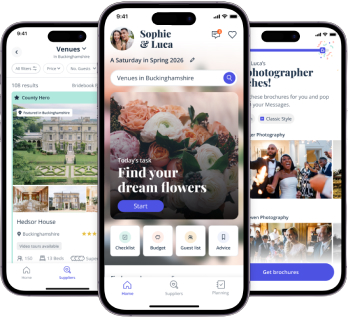The Ultimate Wedding Ceremony Order

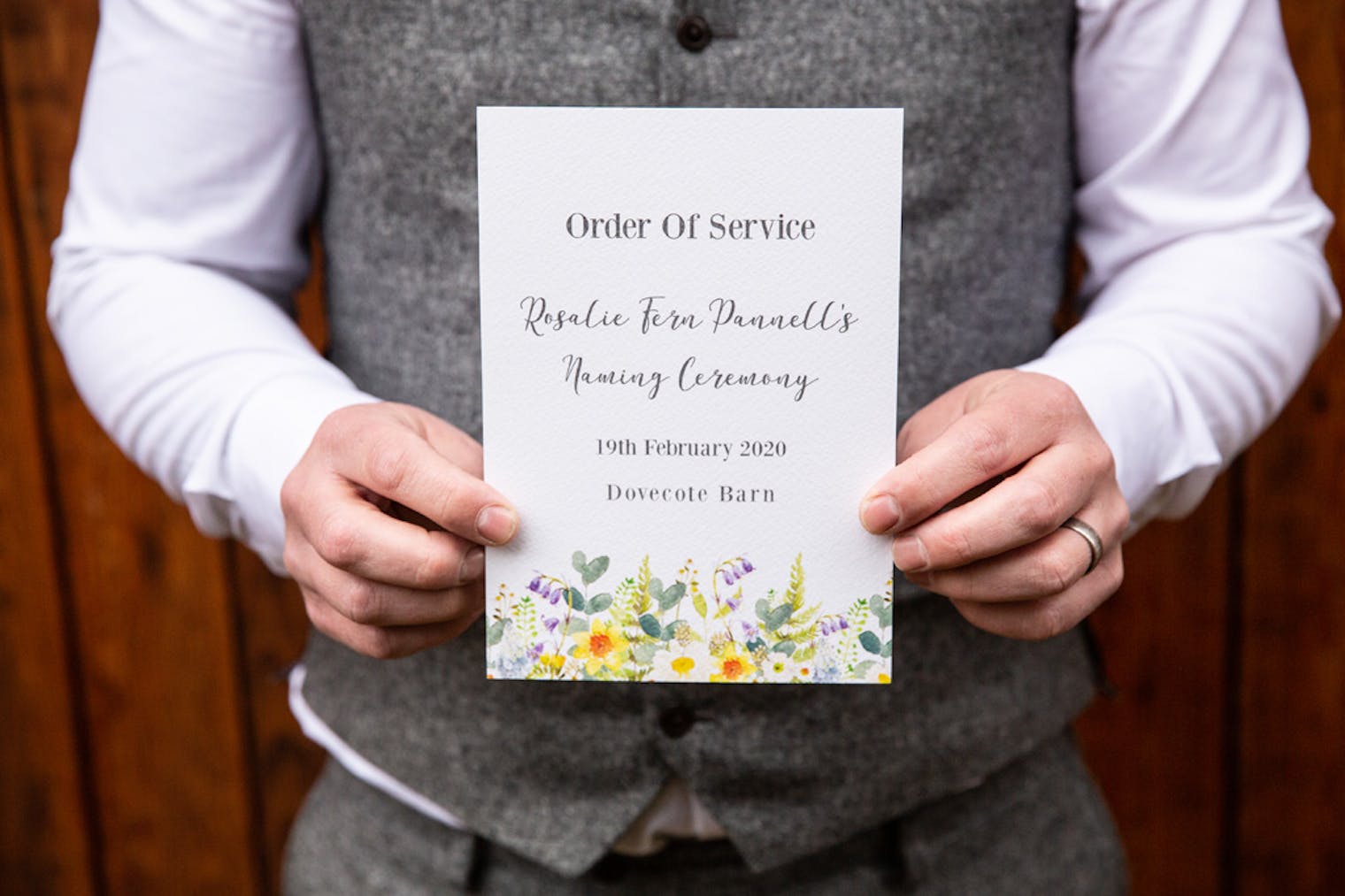
Your wedding ceremony is the biggest and most important moment of your entire wedding day. It’s the culmination of months or even years of planning, and you’ll be running on excitement and adrenaline as you tie the knot with the love of your life, as your family and friends gather to watch.
But what exactly happens at a wedding ceremony? Are they all the same? How do you know what to say and when, and how can you make sure it goes ahead perfectly?
Thankfully, throughout the ceremony, there are professionals to guide you through the process. That doesn’t mean you can’t find out how your ceremony might go down even before you’ve secured a date. So, in this post, we’re going to take a deep dive into different wedding ceremony orders, including those from various cultures, beliefs and religions commonly found across the UK.
Are all wedding ceremony orders the same?
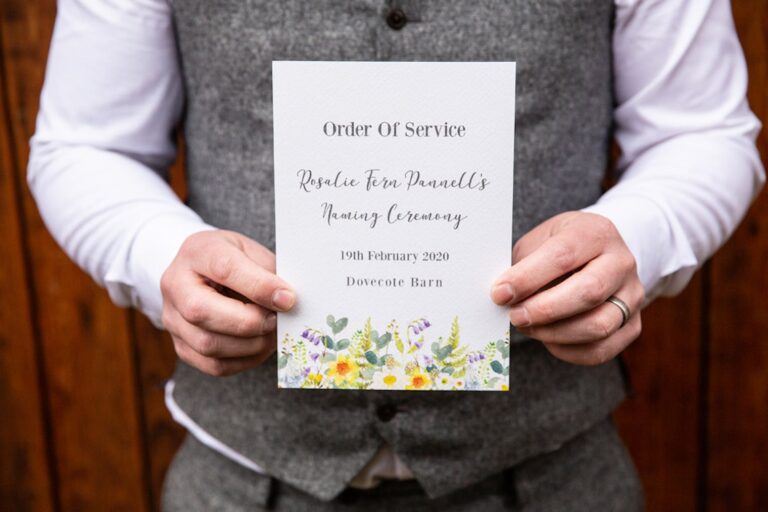
No, not all wedding ceremonies follow the same order. Many ceremonies will contain a lot of the same elements, but they might be in a different order, be longer or shorter, or have different references to religions and traditions.
One of the only things that have to follow the same basic rules at every wedding ceremony in the UK are the declaratory words and contracting words – but even then, there may be some small differences.
Some of the things that can influence a wedding ceremony’s order of events include:
- Cultural and religious traditions – For example, ceremonies at a place of worship will likely include references to God and have hymns, prayers and readings from religious texts.
- The type of wedding – The type of wedding will play a huge part. For example, a traditional wedding will almost always have a longer order than a registry office wedding.
- The celebrant – A celebrant brings a huge amount of personalisation to a wedding ceremony, telling stories to engage you and your guests. This means a ceremony with a celebrant tends to be longer than one without.
- Your budget – If you have a smaller budget, you can opt for a shorter ceremony which means you’re likely to pay less than if you had a longer ceremony.
- The venue – Certain venues may have limitations, or if you’re getting married outside it could influence the order – especially if it threatens to rain.
- Personal preferences – Apart from the legal bit, you have complete control over what you include in your ceremony (especially if it’s a non-religious ceremony). So, if you’d like readings, songs and poetry, you can. Or, if you’d like a short ceremony, this is absolutely fine too.
- The size of your wedding party – If you’re having a small and more intimate wedding, you may not want to include certain aspects of a traditional wedding, such as the processional or confetti shot.
Fore more information, read our ultimate wedding ceremony guide.
How long is a wedding ceremony?
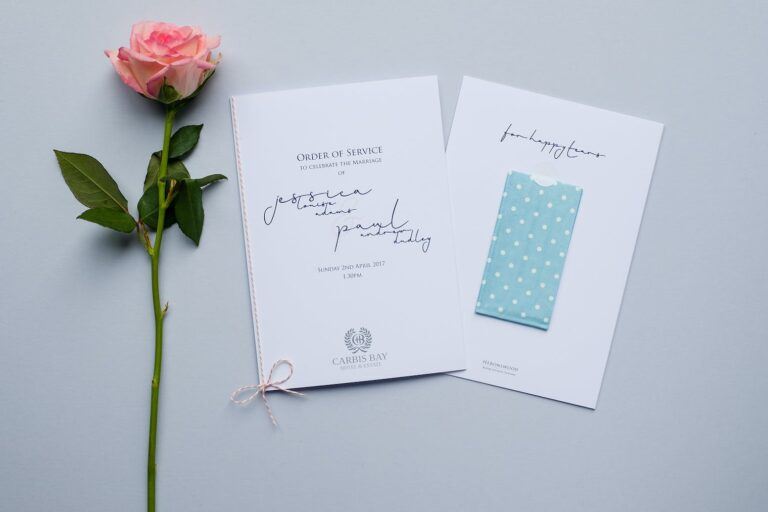
The length of a wedding ceremony can differ massively. A traditional wedding ceremony will last around 45 minutes, while a religious ceremony will be around an hour or more. However, a registry office wedding ceremony is comparatively much shorter, and will usually last around 10 or 15 minutes.
For more information about the length of different types of ceremonies, read our post on how long a wedding ceremony takes.
What is the order at a wedding ceremony?
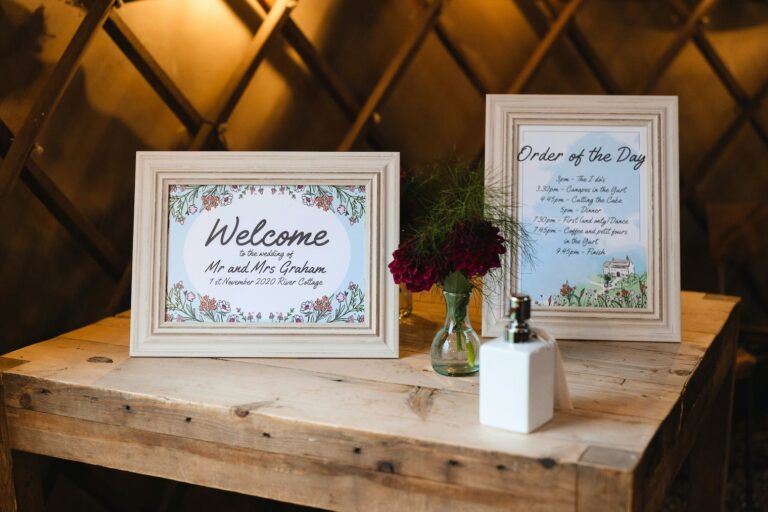
The order at a wedding ceremony is the sequence in which everything happens, from the moment it begins to the moment it ends and you’re legally declared a married couple. As we’ve already highlighted, the order of service at a wedding differs depending on a lot of different factors, from religious beliefs to personal preferences. Below, we’ll take a look at different wedding ceremony orders across a variety of religions and cultures found throughout the UK.
What is a traditional wedding ceremony order?
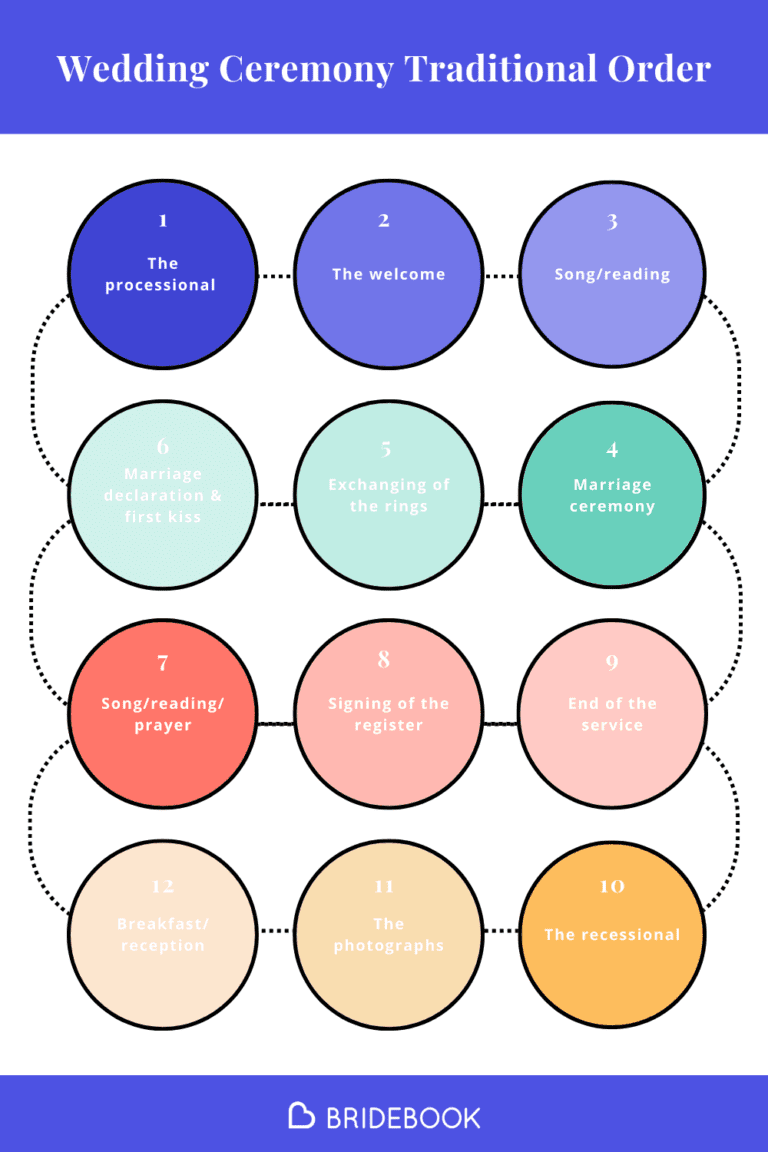
A traditional wedding ceremony is one of the most popular ways for couples to tie the knot in the UK. A traditional ceremony will last around 45 to 60 minutes, depending on your personal preferences and what you’d like to be included, such as readings.
Here’s the order of events at a traditional wedding ceremony in the UK:
1. The processional
This is the moment when your excitement will be at its highest and your wedding ceremony begins. After your guests are seated and settled, the music you’ve chosen will play and the processional will start. The traditional order is:
- Bride’s mum
- Groom’s parents
- Bride’s grandparents
- Groom’s grandparents
- Groom
- Officiant
- Bridesmaids
- Maid of honour
- Best man
- Ring bearer or page boy
- Flower girl
- The bride and her father
Of course, this all depends on the size of your wedding and your own circumstances and preferences. This might be the traditional order, but even at a traditional wedding, you don’t need to stick to it. If you’re an LGBTQ+ couple, you may even choose to walk down the aisle together. Do whatever feels right and what makes the two of you happy on your big day.
2. The welcome
At the end of the procession, your family and friends will take their seats as you and your bridesmaids and groomsmen join you at the front (or altar if you’re having a church wedding ceremony). The officiant will then welcome everyone and thank them for being there on your special day. If you’ve hired a celebrant, they’ll introduce you using stories and humour and add an extra level of personalisation that draws everyone in.
3. A song or reading
Before the marriage ceremony commences, you may have chosen to have a song or reading. These are very common at religious ceremonies, but also something you can include in a non-religious or multi-faith ceremony. You could include your favourite hymn, or ask a loved one to do a reading that means something to you, such as a poem, song lyrics or an extract from a book or play.
4. Marriage ceremony
Next, the part you’ve been waiting for. The officiant will address you to tell you about the commitment you’re making to each other and how important the vows you’re about to exchange are. They’ll ask your guests whether anyone knows of any reason why you may not be married… and you’ll probably hold your breath, even though you know you don’t have anything to worry about!
Then it’s time for the two of you to exchange vows. Many couples choose to repeat short sentences fed to them by the officiant, but you may also want to write your own vows. There’s no right answer or choice here – it’s up to you and what you feel comfortable and happy with.
After the vows, you’ll get to say I do as you and your partner lock eyes. It’s at this stage when your loved ones will be well and truly crying with happiness.
5. Exchanging of the rings
It’s time for the two of you to exchange rings (or another symbolic exchange if you’ve chosen ring alternatives). If you have a best man, they may have been holding on to these for you, which they’ll hand to the officiant. You’ll then exchange some more words, this time about how the rings symbolise your love, as you slip them on each other’s fingers.
6. Declaration of marriage and first kiss
Next, the officiant will say the words you’ve been waiting for so long to hear: By the power vested in me, I now pronounce you husband and wife (or a variation of this for LGBTQ+ couples). They’ll also invite you to share your first kiss, and you’ll happily oblige as your friends and family celebrate and your photographer snaps some fantastic photos.
7. An optional song, reading or prayer
With a religious ceremony, there may be another song, reading or prayer here. This is something you may also want to include in a non-religious ceremony, and is a great way to involve another family member or friend in your ceremony.
8. The signing of the register
For your marriage to be legal, you and your new spouse will have to sign a marriage register in the company of two witnesses. This should only take around 10 minutes and music will play as your guests happily wait for you.
9. The end of the ceremony
Once you’ve signed the register, the officiant will thank your guests for attending and announce that you’d like them to join you at the breakfast or reception to celebrate.
10. The recessional
Music will play as the two of you leave the venue hand in hand, as a newly married couple. Outside, your guests will have lined up (under instruction from your photographer) so they can throw confetti over you as your photographer takes some wonderful pictures for your wedding album.
11. The photographs
Before heading on to the breakfast, your photographer will take a series of photographs with your family and friends, as well as plenty with just the two of you. These will be in and around the venue, and maybe elsewhere if you’ve asked for something specific.
12. On to the breakfast or reception
After the photographs, you and your new spouse will then make your way to the venue for your wedding breakfast or reception and an evening of celebrating with your loved ones.
What is a registry office wedding ceremony order?
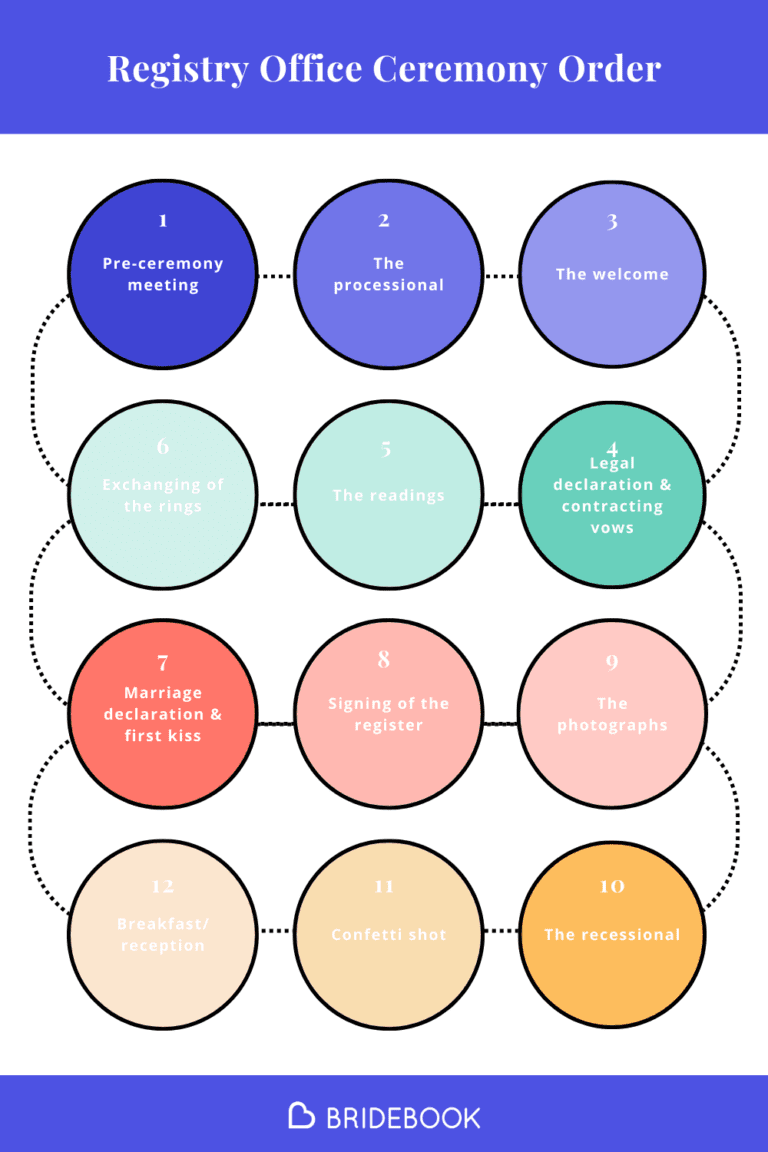
A registry office wedding is far more affordable than a traditional wedding, and is also a lot shorter – many last just 10 minutes. It’s a brilliant way to show your commitment to your partner if you don’t have a large budget or you don’t want the fuss of a big wedding.
Because the ceremony is so much shorter and can’t contain religious elements, there are far fewer elements than there are in a traditional ceremony. An example registry office wedding ceremony will follow an order similar to this:
1. Pre-ceremony meeting
Before the ceremony officially begins, you’ll meet with the registrar (either separately or together) just to check that all the details are correct. Once confirmed, the ceremony can begin.
2. The processional
Because registry office weddings are more intimate, the wedding party will be smaller than at a traditional wedding. However, you can still have bridesmaids, groomsmen, a page boy and flower girl if you like.
You can also choose the music you’d like to play, but it can’t be a hymn or religious piece of music.
3. The welcome
Once you’re both at the front and your guests are seated, the registrar welcomes everyone to the ceremony.
4. The legal declaration and contracting vows
The registrar will run through the words each of you has to repeat as part of the declaration and vows, which you can choose ahead of the ceremony.
5. The readings
If you choose to include readings, such as a poem or lyrics from a song, they’ll usually come after the vows. Like the music, they also can’t have any religious elements.
6. The exchanging of the rings
The registrar will then ask for the rings (which your best man may be holding on to) and you’ll give them to one another while saying personal vows. These can be fed to you by the registrar or you can write your own non-religious vows.
7. The declaration of marriage and first kiss
Now, the registrar will declare you married and invite you to share your first kiss as a married couple.
8. The signing of the register
The two of you, as well as your witnesses, will sign the register so your marriage is legally binding. You can also choose the music to play while your guests wait.
9. The photographs
The two of you can pose for photographs with your certificate, which may be family or friends or an official photographer if you choose to hire one.
10. The recessional
The registrar will end the ceremony and announce that you’d like your guests to join you if you’re moving on to a venue for a breakfast or reception. As you exit, you can have another piece of music of your choosing playing.
11. More photographs and the confetti shot
If you’ve hired a photographer, they’ll work with your guests to set up the perfect confetti shot. We recommend you speak to the venue ahead of time to make sure they’re happy with you using confetti (as there can sometimes be restrictions on this).
The photographer will then direct you and your guests so you can have photos taken for your wedding album.
12. On to the breakfast or reception
If you’ve chosen to have a breakfast or reception after the ceremony, you’ll make your way to the event to spend time celebrating your marriage with your loved ones.
What is a Catholic wedding ceremony order?
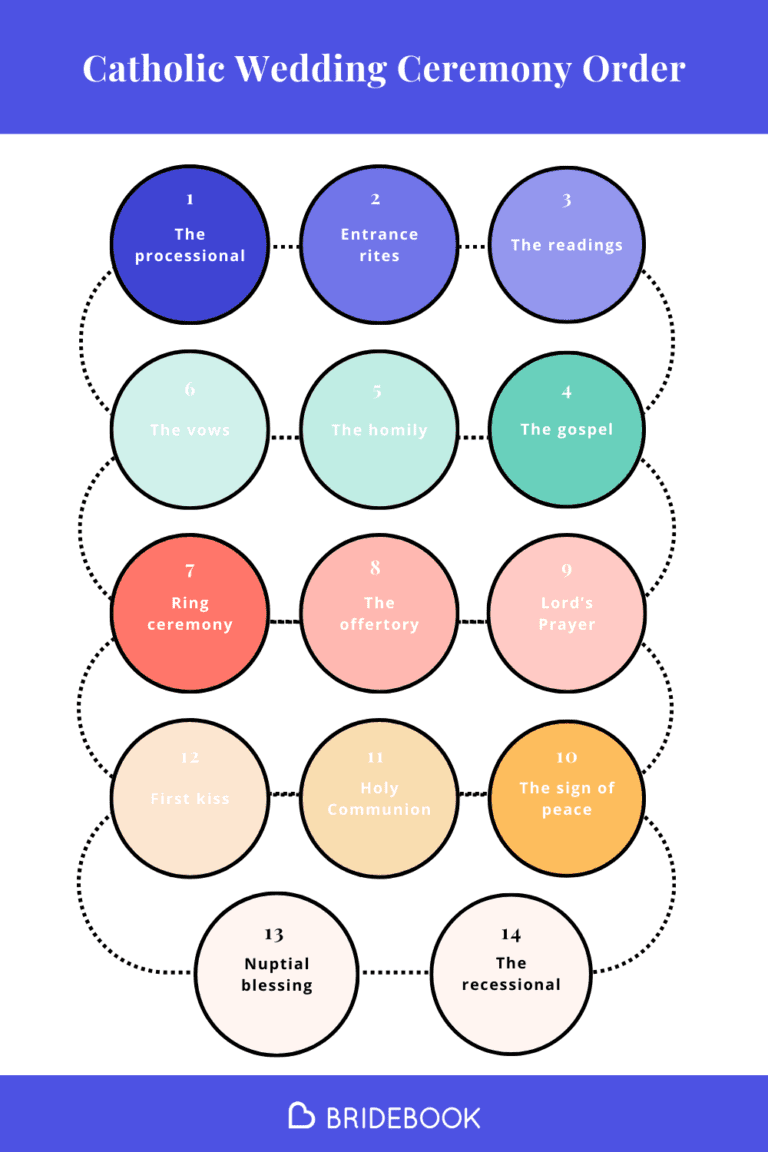
A Catholic wedding ceremony is a highly religious ceremony, because the Church believes that marriage is not only a promise between a couple, but also to God. As a result, all Catholic wedding ceremonies take place in a church.
The order is similar to that of a traditional wedding ceremony, but with several noticeable differences. Below is what you might see as part of a Catholic wedding ceremony order, which doesn’t allow for as many personalisations as a traditional ceremony.
1. The processional
The processional begins with the priest first walking down the aisle to the altar, followed by the wedding party which follows the same order as a traditional ceremony, which is:
- Bride’s mum
- Groom’s parents
- Bride’s grandparents
- Groom’s grandparents
- Groom
- Officiant
- Bridesmaids
- Maid of honour
- Best man
- Ring bearer or page boy
- Flower girl
- The bride and her father
2. The entrance rites
The priest will welcome guests and begin with a prayer and rites. Because at least one side of the family has to be Catholic in order for the church to allow the ceremony to take place within the church, guests are expected to take part. A Catholic wedding isn’t always celebrated with a Mass, but they often are, especially if both families are Catholic.
3. The readings
Ahead of the ceremony, some of your guests will be asked to read passages from the Bible; one from the Old Testament and another from the New Testament. One of these readings will be about marriage, and your guests will repeat the Responsorial Psalm.
4. The gospel
Your guests will stand and the priest will read a passage from either Matthew, Mark, Luke or John, which will most likely be linked to love or marriage.
5. The homily
The priest will give a speech or sermon known as a homily, which explains the meaning behind the gospel and how it relates to the commitment you’re about to make to each other.
6. The vows
Next, you will recite or read your vows, otherwise known as a rite of marriage. These are set vows and you can’t add any personalisations. However, instead, you may ask the priest to read the vows so you can respond with I do.
7. The ring ceremony
The priest will ask the best man (or whoever else is holding them) for the rings, which they will bless with a prayer and holy water. The priest will then ask you to recite some words as each of you place the rings on each other’s fingers.
8. The offertory
Ahead of the ceremony, you will have asked several guests to offer gifts during the ceremony, which they will do now. Meanwhile, your other guests will be given the opportunity to offer a monetary donation. The priest brings forward and blesses the bread and wine, known as the Liturgy of the Eucharist.
9. The Lord’s Prayer
The congregation will recite the Lord’s Prayer.
10. The sign of peace
The priest will encourage all guests to greet each other with a handshake as a way to symbolise neighbourly love.
11. Holy Communion
Like at Mass, guests will gather at the altar to be offered bread and wine, which signifies the body and blood of Jesus. It symbolises a new covenant that God gives to His followers.
12. The first kiss
The priest will encourage you to share your first kiss as a married couple. If the bride is wearing a veil, the groom will lift it first.
13. The nuptial blessing
The priest will bless your guests with a prayer, which will end with the line go in peace, which guests will respond to by saying thanks be to God.
14. The recessional
The wedding party will walk back down the aisle in reverse order and leave the church for the confetti shot and photographs. Then, everyone will make their way to the next venue for the wedding breakfast and reception.
What is a Jewish wedding ceremony order?
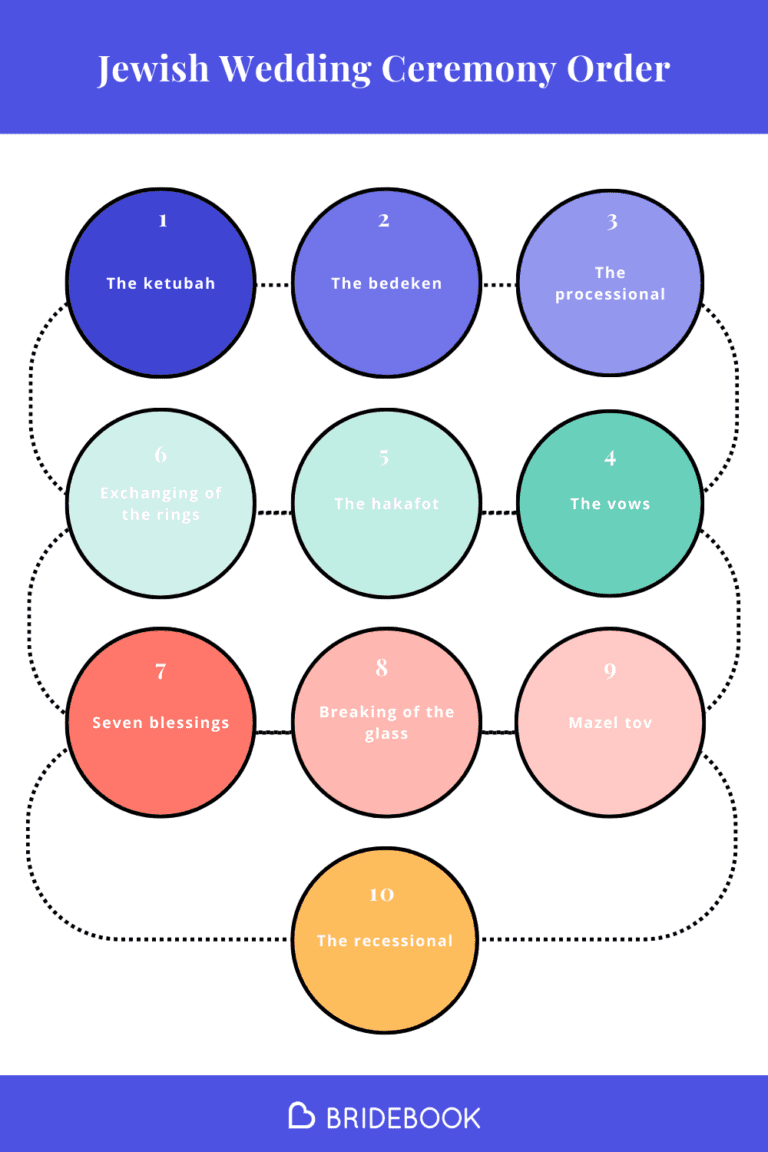
A Jewish wedding ceremony will usually take place in a synagogue, which is the name of a Jewish place of worship. The bride’s family will sit on the right-hand side, while the groom’s family sit on the left. A Jewish wedding ceremony will follow an order similar to the below:
1. The ketubah
Before the ceremony begins, the two of you will sign the marriage contract, known as the ketubah.
2. The bedeken
The bedeken is the name given to the ritual where the groom veils the bride before the ceremony, so he can see her face and know who he’s marrying.
3. The processional
The rabbi will begin a Jewish wedding ceremony by walking down the aisle followed by the rest of the wedding party in the following order:
- Bride’s grandparents
- Groom’s grandparents
- Groomsmen
- Best man
- The groom and both parents
- Bridesmaids
- Maid of honour
- Ring bearer
- Flower girl
- The bride and both parents
4. The vows
You will stand together under the chuppah, a canopy supported by four poles at the front, which symbolises the new home being created, and you’ll recite your vows.
5. The hakafot
Traditionally, the bride walks around the groom seven times, which is a gesture that symbolises protection. Many modern Jewish weddings will switch this up slightly, with the bride and groom each circling one another.
6. The exchanging of the rings
The ketubah which was signed before the ceremony is read aloud as the groom gives the bride her ring. There may also be a prayer which is traditionally in Hebrew, but in modern Jewish weddings, it may be recited in English.
7. The seven blessings
The seven blessings, also known as Sheva Brachot, are chanted by the rabbi or another guest of your choosing. This may also be in Hebrew or English. The bride then gives the groom his ring.
8. The breaking of the glass
A glass is placed on the floor beneath a cloth or napkin, and the groom stamps on it to break it. This symbolises the fragility of marriage, and how it has to be looked after so it doesn’t break. This is usually followed by a reading from Psalms.
9. Mazel tov
Guests are then invited to shout mazel tov! which is Hebrew for congratulations.
10. The recessional
The wedding party leaves the synagogue, as guests clap and cheer, in the following order:
- The couple
- Bride’s parents
- Groom’s parents
- Bride’s grandparents
- Groom’s grandparents
- Flower girl
- Ring bearer
- Best man
- Maid of honour
- Bridesmaids
- Groomsmen
- Rabbi
What is a Muslim wedding ceremony order?
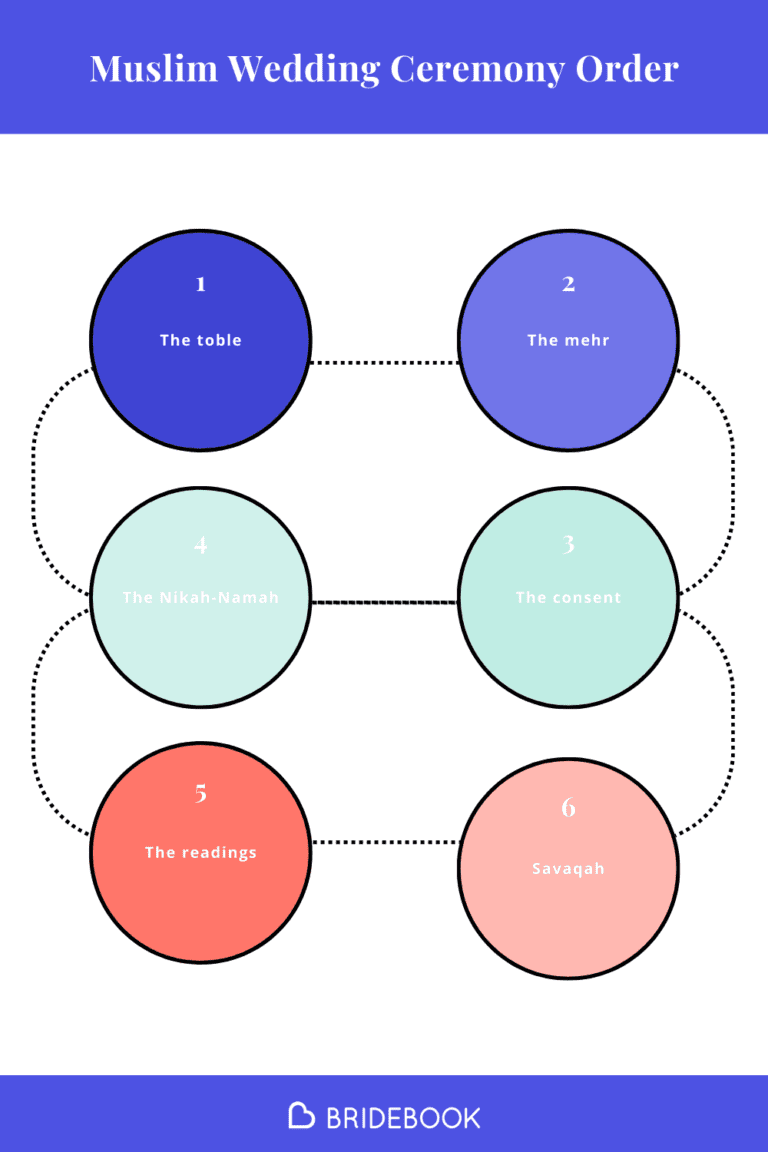
A Muslim wedding ceremony, otherwise known as a Nikah, usually takes place in a mosque, a Muslim place of worship. Guests are asked to remove their shoes before entering the mosque, and men and women often sit separately during the ceremony. The mosque prayer leader, known as an Imam, will usually be the officiant.
The ceremony itself is usually fairly short, and will be completed within around 30 minutes. It will usually follow an order similar to the below:
1. The toble
Before the ceremony, the groom will speak to the bride’s parents to ask their permission to marry their daughter, which is known as the toble. Once the groom has permission, everyone will say a prayer called Surah Fatiha.
2. The mehr
The mehr is a gift, a little bit like a traditional dowry, given to the bride by the groom. The engagement ring may be considered the mehr, but it could also include other gifts or money.
3. The consent
Without seeing each other, the bride and groom need to give their consent. To do this, they must say qubool hai three times to the officiant.
4. The Nikah-Namah
The Nikah-Namah is the name of the Muslim marriage contract that the two of you will sign. Beforehand, it’s read aloud in Arabic by the officiant so everyone can hear.
5. The readings
The officiant will read verses from the Quran as part of a short sermon, at which point you will officially become married.
6. Savaqah
The final part of the ceremony is known as Savaqah, which is when gifts are given to those in need. In the case of a wedding ceremony, money is thrown at the bride.
Following the ceremony, you are joined by your guests to celebrate your marriage at the reception, which is usually at a different venue, such as a hotel. This begins with the zaffe, which is when the bride’s father walks her to the groom accompanied by music.
What is a Hindu wedding ceremony order?
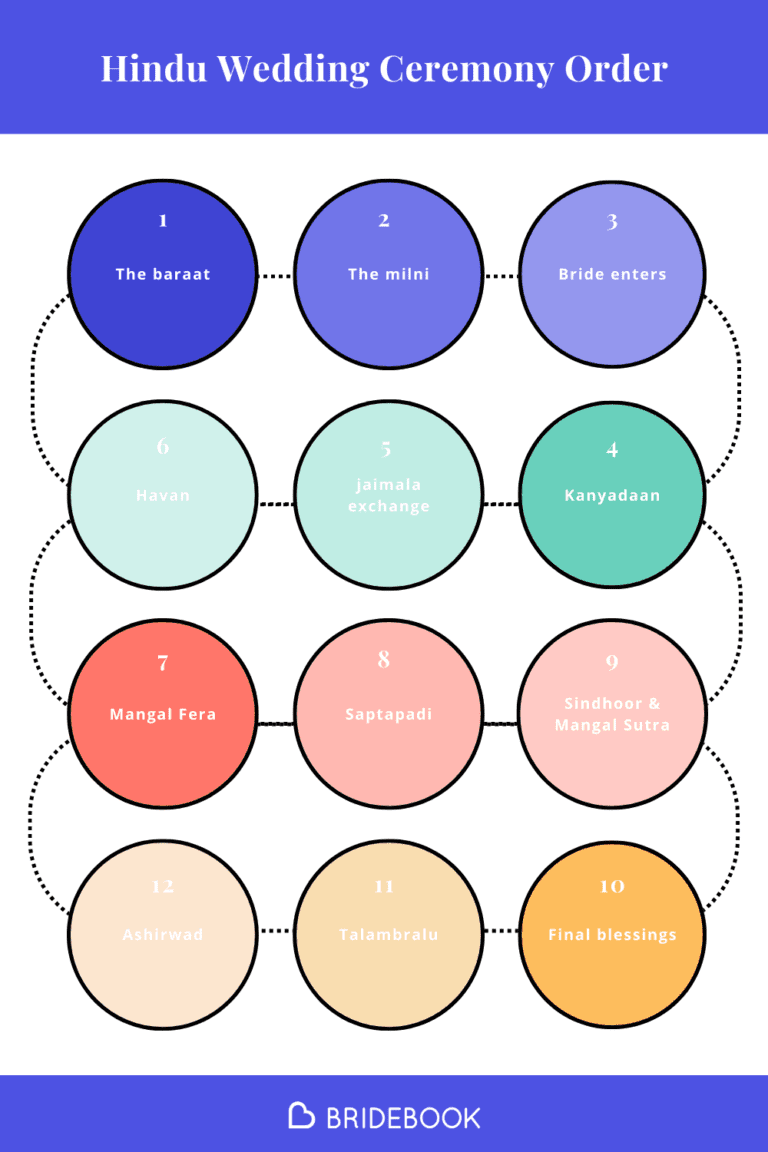
Hindu wedding ceremonies are among the longest in the world, often lasting many days as you’re joined by your guests to mark the occasion. A Hindu wedding ceremony isn’t legally binding in the UK, so beforehand you need to marry at a registry office, and then have the religious ceremony and celebrations afterwards. The ceremony is usually officiated by a Brahmin priest.
Before the day of the ceremony will also be Mehndi, which is when the bride’s family organises for the couple to come together so they can paint delicate henna designs on their hands and feet. This is similar to Haldi, when older female members of the family make a paste from turmeric and paint it onto the bride and groom to symbolise cleansing.
The actual Hindu ceremony itself will last around 90 minutes, and the order will follow something similar to the below:
1. The baraat
The baraat is the name given to the groom’s arrival, which he will traditionally do while riding a white horse, but in many modern Hindu weddings, the groom may prefer to ride in a car, like a sports car or convertible.
2. The milni
The milni is a meeting between the groom and the bride’s parents and friends. He may be presented with a gift known as a shagun, which is supposed to bring him good luck.
3. The bride enters
The bride walks down the aisle being escorted by male family members. Traditionally it might be her brothers or uncles, but more brides are choosing to be accompanied by their fathers. The bride joins the groom, his parents, the bride’s mother and the priest at the front.
4. Kanyadaan
This is when the bride’s father gives away his daughter, which is a long-standing Hindu tradition. In kanyadaan, the bride’s father takes her right hand and places it in the groom’s right hand. He then asks him to treat her as his equal.
5. The jaimala exchange
The two of you exchange jaimala, which are garlands made from fresh flowers. It symbolises you accepting each other into your lives. The priest will then say a prayer in Sanskrit.
6. Havan
A sacred fire is lit to invite the deity Agni, the fire God, to rid you of darkness and bring you eternal light and knowledge. The bride gives an offering called homam, which can be rice and flowers.
7. Mangal Fera
Next, the groom leads the bride around the first three times, followed by the bride leading once. Each pass, known as a fera, represents one of life’s goals:
- Dharma (morality)
- Artha (prosperity)
- Kama (positive energy)
- Moksha (liberation)
As you complete the feras, the priest chants holy Mantras. Following this, you might race to take your seats, with tradition dictating that whoever sits first will be the head of the household. So you best make sure you wear some decent running shoes!
8. Saptapadi
To symbolise friendship, which is an important foundation for any Hindu marriage, you will take seven steps together, which may be around the holy fire. With each step you make a vow, and once all seven steps are complete you are officially married.
9. Sindhoor and Mangal Sutra
The groom puts sindhoor, an orange or red powder, in the bride’s hair. The groom then gives the bride a gold necklace, which is a symbol of love and respect, which, traditionally, she would only remove if her husband were to die.
10. The final blessings
The ceremony comes to an end as elders recite prayers and readings, and your guests offer their congratulations. Traditionally this is married women, who whisper good wishes into the bride’s right ear.
11. Talambralu
Talambralu is the end of the ceremony and is a happiness ritual, when you both bless one another by throwing rice, turmeric and saffron, which symbolises wealth and prosperity for your life ahead.
12. Ashirwad
To thank your guests for coming, you bow your heads to them as they offer blessings and well-wishes to you. Guests will also throw rice and flowers at you in celebration.
Following the ceremony, there’s likely to be several days of celebrating and festivities, with food, drink, music and games.
What is a non-denominational wedding ceremony order?
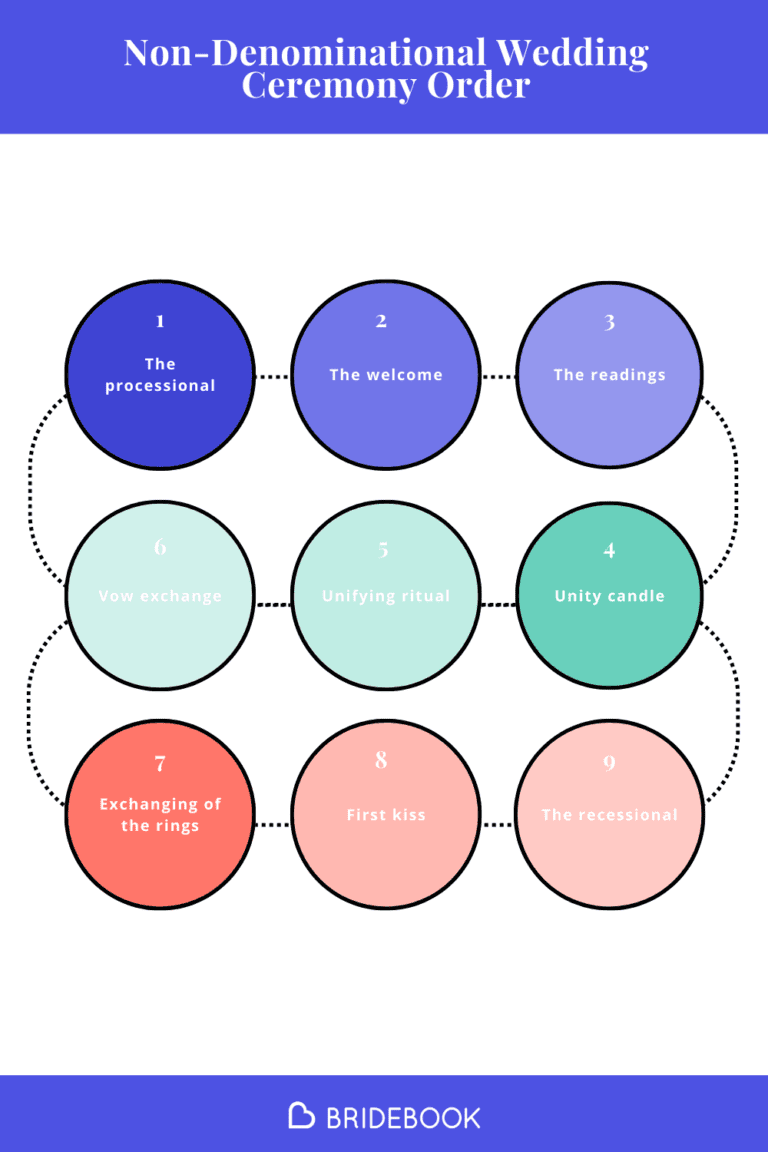
A non-denominational wedding ceremony is generally a ceremony that doesn’t have a specific religious connection, and is relatively similar to a traditional wedding. It offers the couple the chance to have a personalised wedding and includes different traditions and rituals that aren’t tied to a specific religion.
Below is an example of what a non-denominational wedding ceremony order might look like:
1. The processional
The wedding party walks down the aisle, usually in the following order:
- The officiant (anyone who has been ordained)
- The groom
- Best man
- Groomsmen
- Bridesmaids
- Maid of honour
- Ring bearer
- Flower girl
- The bride (with one or both parents)
Alternatively, the groom may want to stand at the altar before the processional starts, having entered from the side.
2. The welcome
The officiant welcomes everyone to the ceremony and will speak about you and the significance of marriage.
3. The readings
This is when a guest of your choosing will perform a reading, which might be a poem, song lyrics or a quote from a play or book. At a non-denominational wedding, readings can be from religious texts as well.
4. The unity candle
To symbolise unity, the pair of you lights a candle as the officiant gives a short sermon about commitment.
5. The unifying ritual
At this point in a non-denominational wedding ceremony, you will take part in a ritual that symbolises the two of you uniting as one. Because non-denominational ceremonies are so customisable, this could be religious or not. Popular unifying rituals include:
- Releasing a lantern
- Handfasting
- Pouring sand
- Circling
- Jumping the broom
- Planting a tree
- Pouring tea or wine
6. The exchanging of vows
Next, you’ll exchange your vows, which you may have written yourselves (to either read or memorise) or have them fed to you by the officiant. You may also choose to say I do, one of the most exciting things to say over the whole wedding. Again, this is something you’re in control of, so do whatever makes you happy.
7. The exchanging of rings
You’ll then place wedding rings on each other’s fingers while reciting or repeating lines given to you by the officiant. If you’ve chosen not to wear rings, you may exchange another item of significance.
8. The declaration of marriage and first kiss
The officiant will declare you as married and invite you to share your first kiss in front of cheering family and friends.
9. The recessional
Finally, you walk back down the aisle, followed by the wedding party (in the opposite order to how everyone entered during the processional). Then it’s outside for the confetti shot and photographs before heading off to celebrate at your wedding breakfast and/or reception.
Plan your perfect wedding with Bridebook
Now that you know the order of many common wedding ceremonies in the UK, you can start planning your own big day. Sign up to Bridebook to discover all the tools, information and resources you need to make planning fun and simple.
- The Ultimate Wedding Ceremony Guide
- How to Plan a Wedding: Our Step-By-Step Wedding Planning Guide
- The Best Wedding Day Timeline
- How Long is a Wedding Ceremony?
Browse other similar articles…
- The Ultimate Wedding Ceremony Guide
- The Best Wedding Day Timeline
- How Long is a Wedding Ceremony?
- Everything You Need to Know about Page Boys
- Everything You Need to Know about Flower Girls
Happy Planning!

